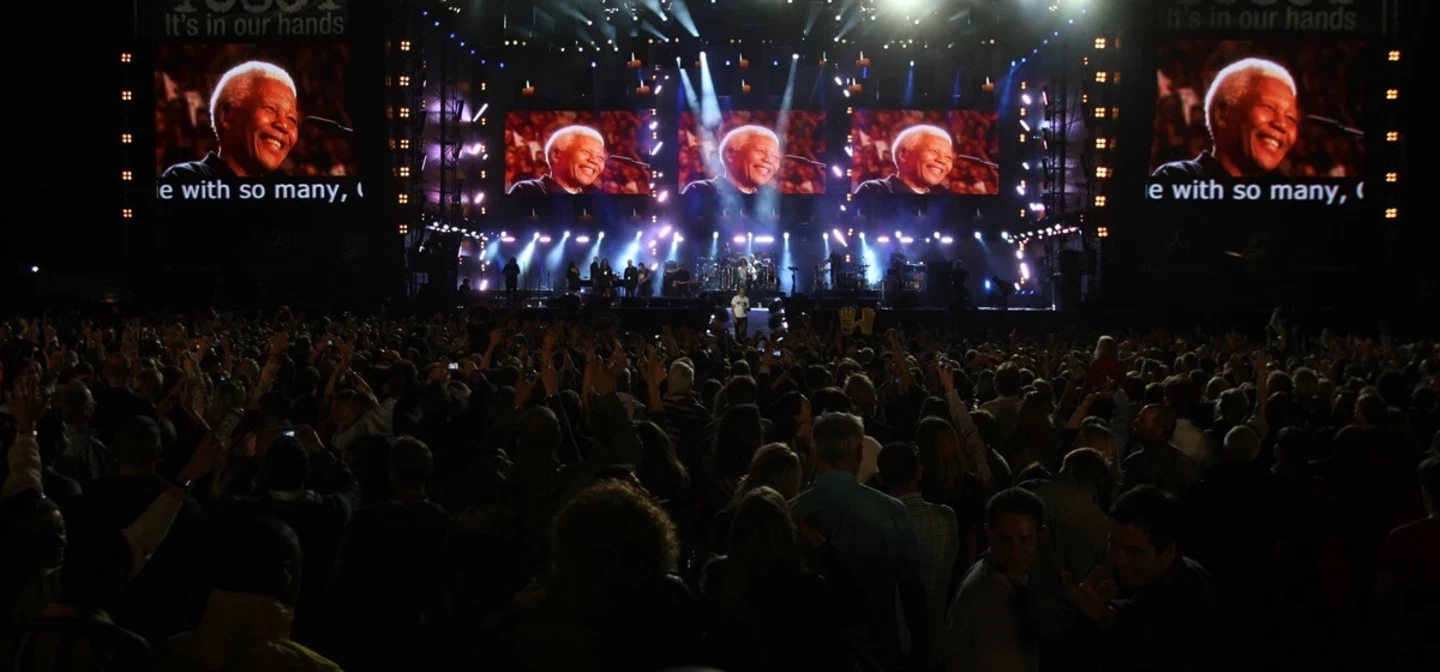
Nelson Mandela's special connection to the Royal Parks
Nelson Mandela was born 1918 and died in 2013. Mandela was the iconic anti-apartheid leader and South Africa’s first democratically elected President. He had a very special connection with the Royal Parks that endures today.
Mandela's time in prison
In 1964, Nelson Mandela was sentenced to life imprisonment along with other leaders of the African National Congress for protesting against apartheid, a system of racial segregation in South Africa. By the 1980s, international pressure was building for their release – including in the UK.
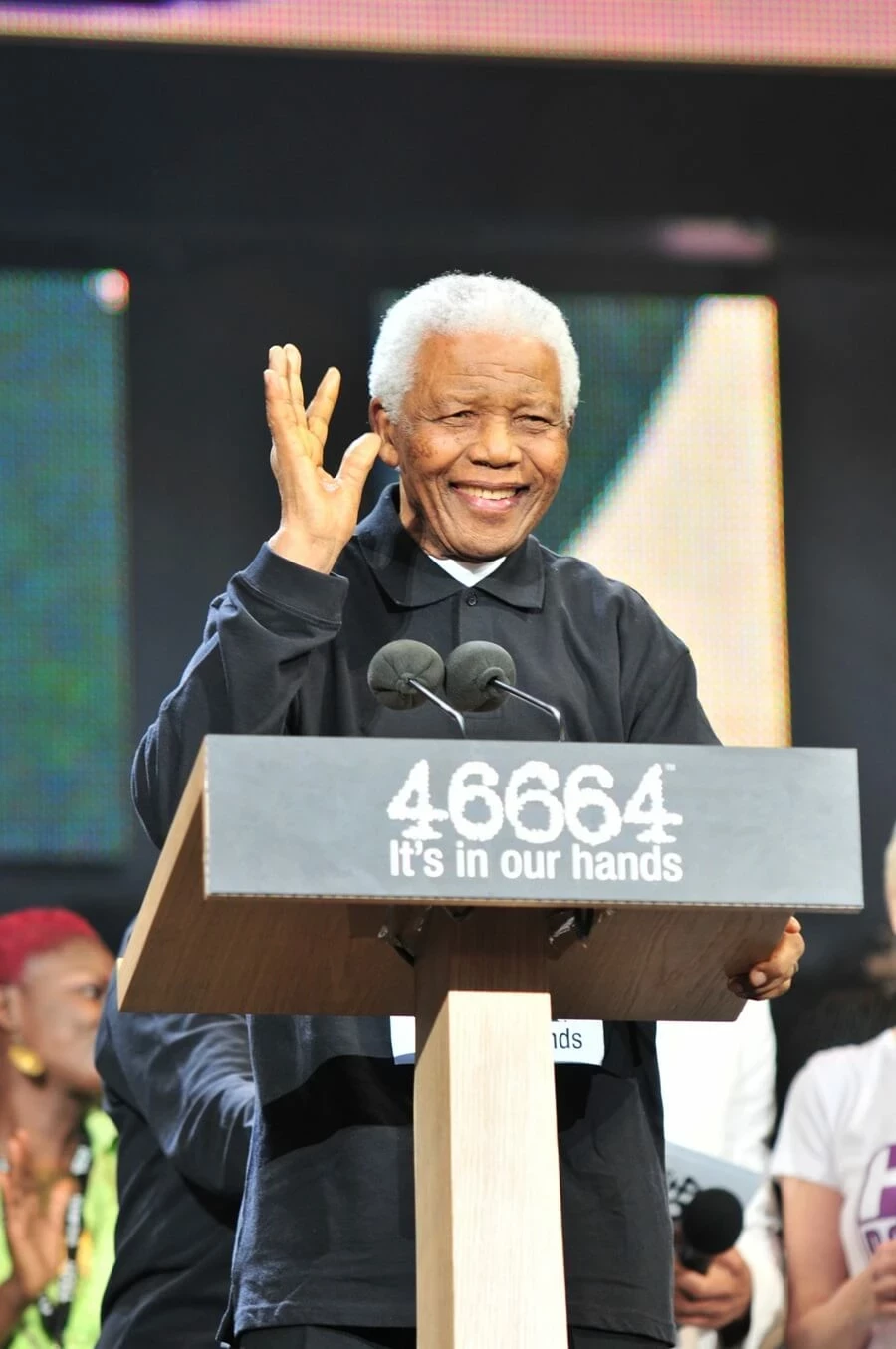
‘Nelson Mandela: Freedom at 70’ rally in Hyde Park, 1988
In 1988, the Anti-Apartheid Movement in the UK launched the ‘Nelson Mandela: Freedom at 70’ campaign to coincide with Mandela’s upcoming 70th birthday. The campaign was launched with a concert at Wembley Stadium in London. The next day, 25 freedom marchers set off from Glasgow to London, where they arrived on the eve of Mandela’s birthday.
A quarter of a million people joined the marchers at a gathering in Hyde Park, where they heard Bishop Desmond Tutu call for Mandela’s release. This enormous rally was the climax of the freedom campaign, and the biggest ever anti-apartheid demonstration in Britain. At the end of the ‘Nelson Mandela: Freedom at 70’ campaign, polls reported that 70% of British people supported the call for Mandela’s release from prison.
Mandela was finally released on 11 February 1990, having been imprisoned for 27 years.
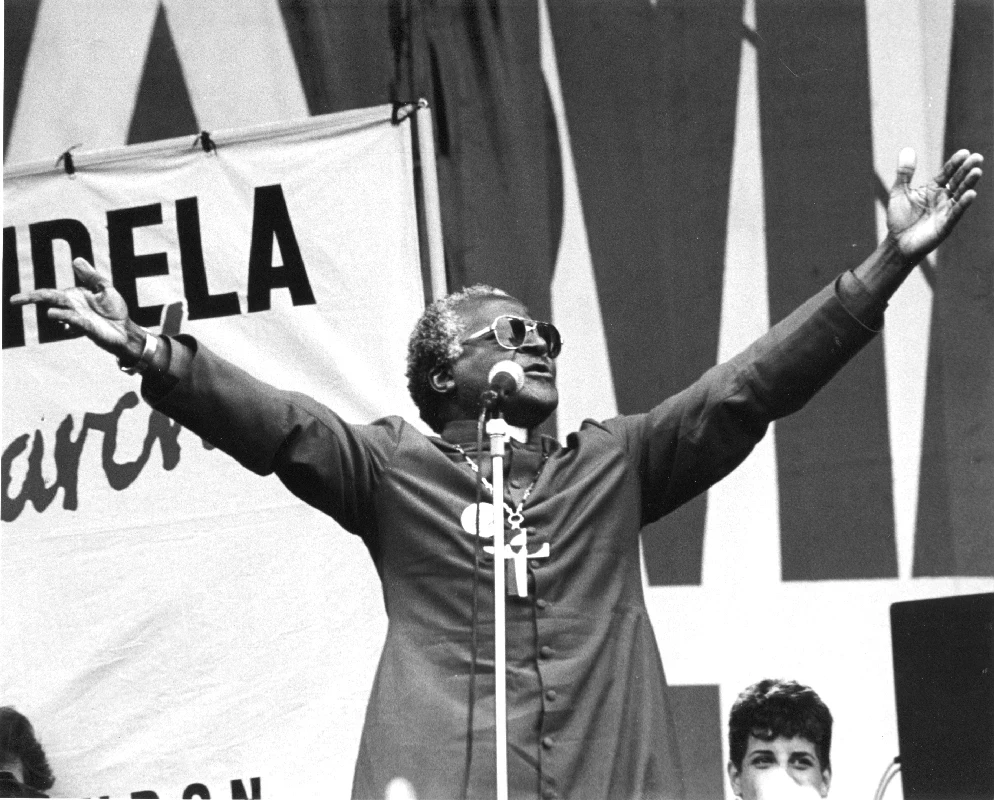
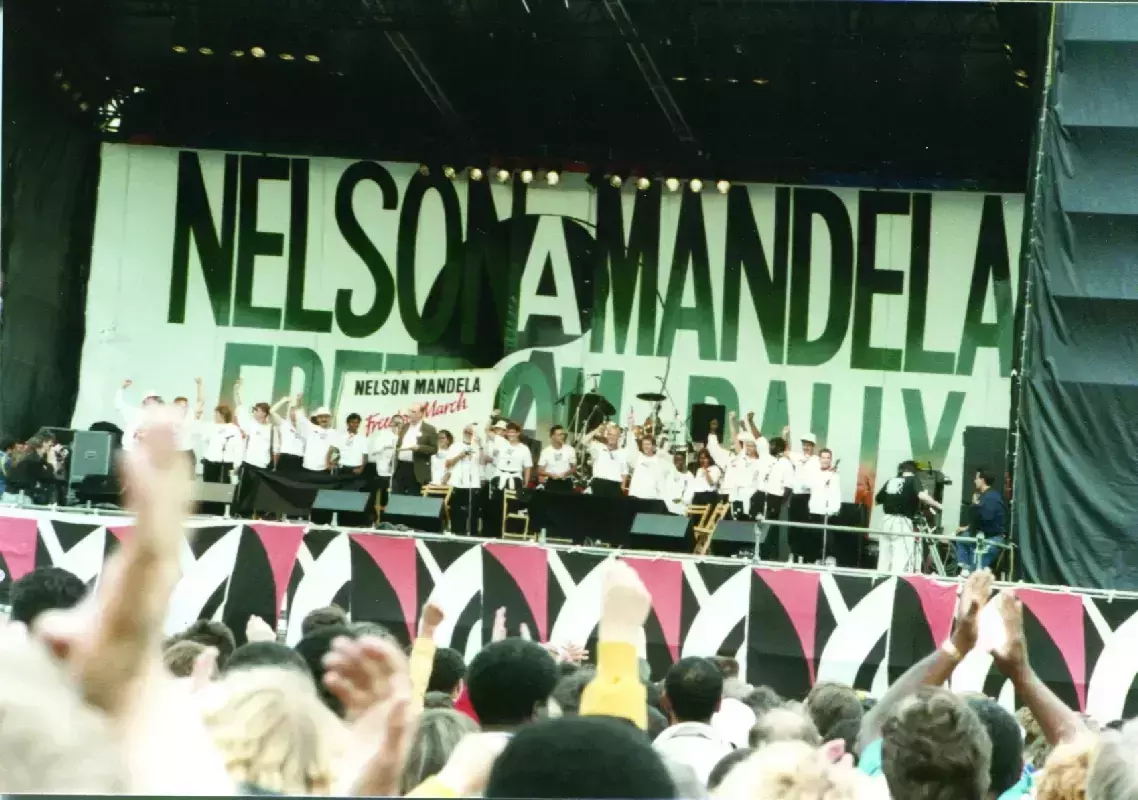
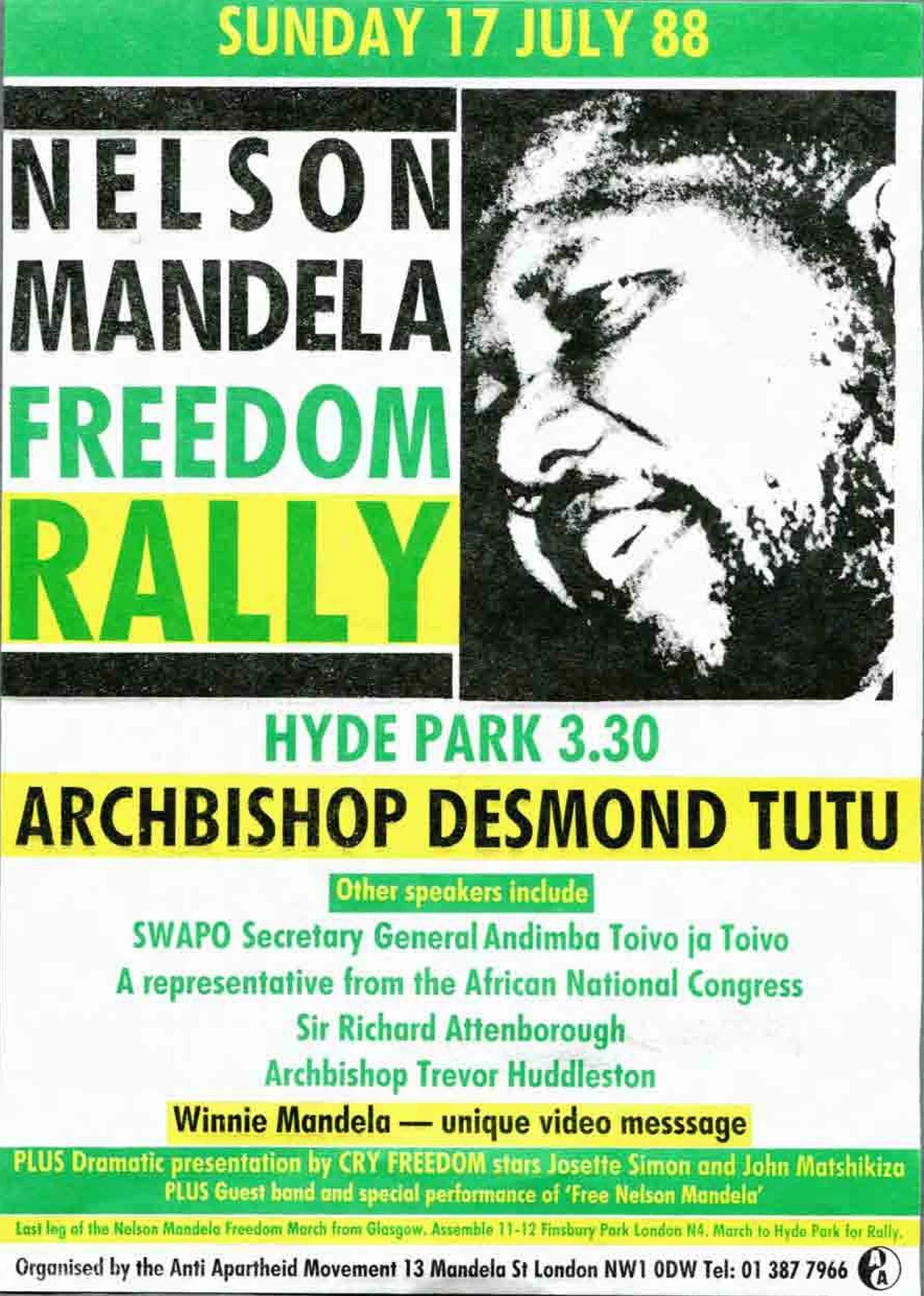
‘The Mandela Tree’ in St. James’s Park, 1996
Nelson Mandela’s first visit to the Royal Parks took place on a summer’s morning in July 1996, six years after his release from prison. At 7:30am, a crowd gathered to watch Mandela walk from Buckingham Palace to St. James’s Park, where he planted a London Plane tree. This tree was officially named ‘The Mandela Tree’.
Addressing the crowd in St. James’s Park, which included dancers and singers from the South African Music Village, Mandela called the tree ‘symbolic’ and added: ‘I wish I had the resources to come and water it every week.’
Neville Labovitch, Chairman of the Prince of Wales’s Royal Parks Tree Appeal at the time, said of the tree: ‘It’s special in a world of pollution. It thrives, it’s strong, and it’s dependable. It will live for a very long time. It is a Mandela tree.’ Jennifer Adams, a former member of staff at The Royal Parks, recalls Mandela’s visit. ‘He was very relaxed and exuded a saintly aura’, she said, adding ‘I was very impressed by him.’
Today, a plaque marks the spot where the Mandela tree is located. If you’d like to see this tree for yourself, you can find it with our downloadable map of the trees in St. James’s Park.
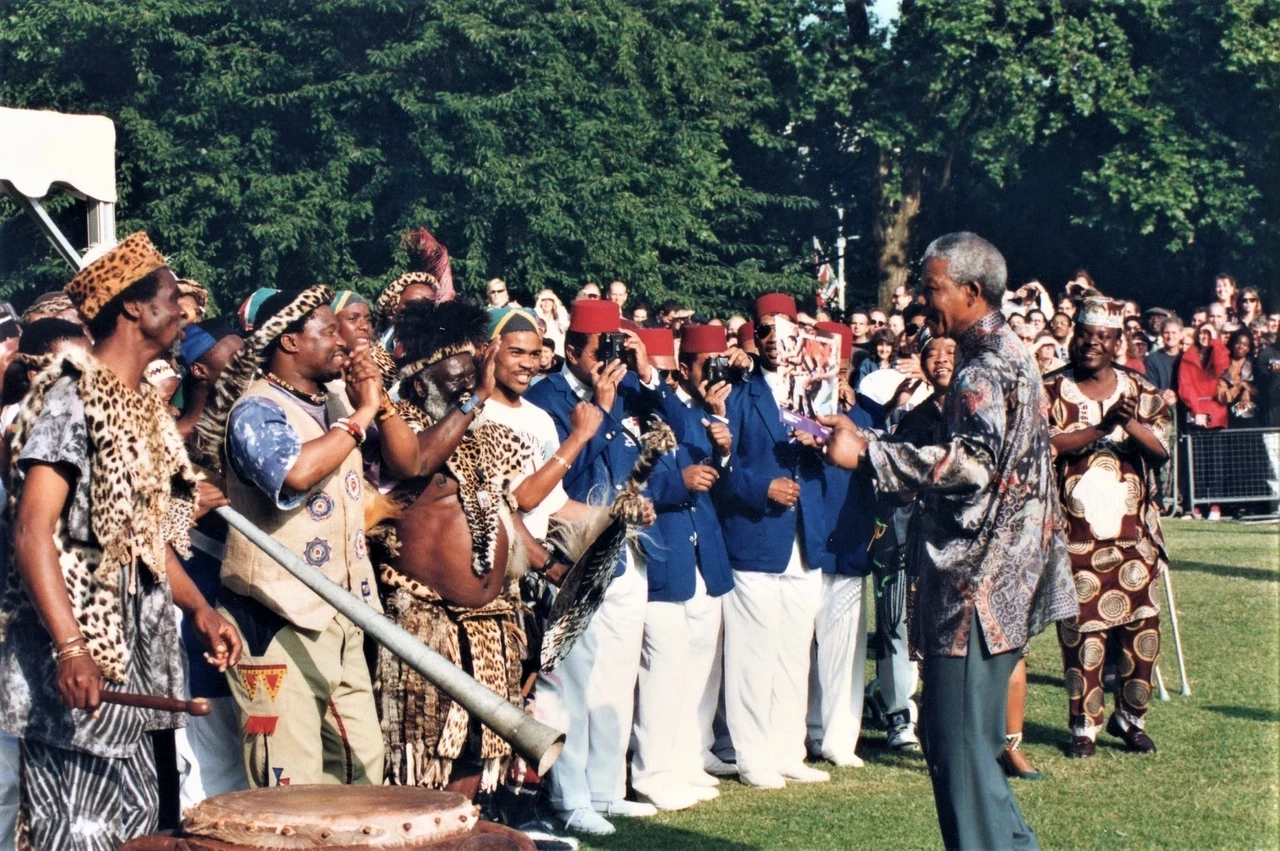
The ‘46664 concert’ in Hyde Park, 2008
In 2008, a tribute concert was arranged in Hyde Park to mark Nelson Mandela’s 90th birthday. Mandela said at the announcement of the concert:
"You all know that I am supposed to be retired, but my friends and the charitable organisations that bear my name want to use my 90th birthday year to raise funds to continue our work and so of course I want to help them. So, we have a bargain – I am going to London and they will host a concert in Hyde Park, which will raise awareness of our continuing work and much-needed funds."


The concert was called the ‘46664 concert’ because 46664 was Mandela’s prison number. The 46664 Foundation used proceeds from the concert to raise awareness about the impact of AIDS and promote effective HIV prevention measures around the world.
Hosted by Will Smith and Jada Pinkett-Smith, the concert featured performances from South African artists such as Johnny Clegg, the Soweto Gospel Choir, Sipho “Hotstix” Mabuse, Vusi Mahlasela and Kurt Darren. Other performers included Amy Winehouse, Annie Lennox, South Sudanese rapper Emmanuel Jal and Kenyan singer Suzanna Owiyo.
Watch this special video recording of Mandela's speech at the 46664 concert in Hyde Park, or read the transcript below:
Where there is poverty and sickness, including Aids, where human beings are being oppressed, there is more work to be done. After nearly 90 years of life, it is time for new hands to lift the burdens. It is in your hands now.
The echoes of Mandela’s words and his unwavering commitment to equality continue to resonate today. His special connection to the Royal Parks remains part of the enduring legacy of this extraordinary leader.
We would like to thank the Nelson Mandela Foundation and the Anti-Apartheid Movement Archives for their assistance with this blog post.
Banner image © Nelson Mandela Foundation / 46664
Related Articles
-
 Read
ReadJoe Louis at Bushy Park
Joe Louis is remembered as one of the first black sportsmen to transcend the colour barrier, and in WW2 he made a special appearance at Bushy Park.
-
 Read
ReadRemembering Ignatius Sancho
Ignatius Sancho was a writer, composer and abolitionist who lived on the edge of Greenwich Park, and became the first black person to vote in Britain.
-
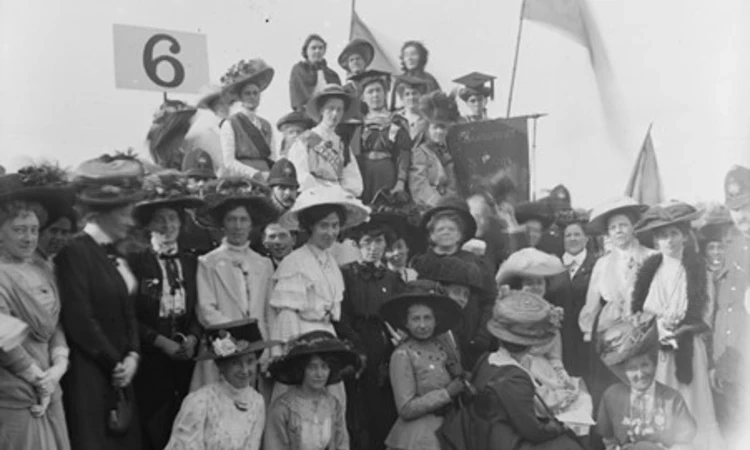 Read
ReadThe suffragettes in Hyde Park
The suffragettes in Hyde Park on Women’s Sunday